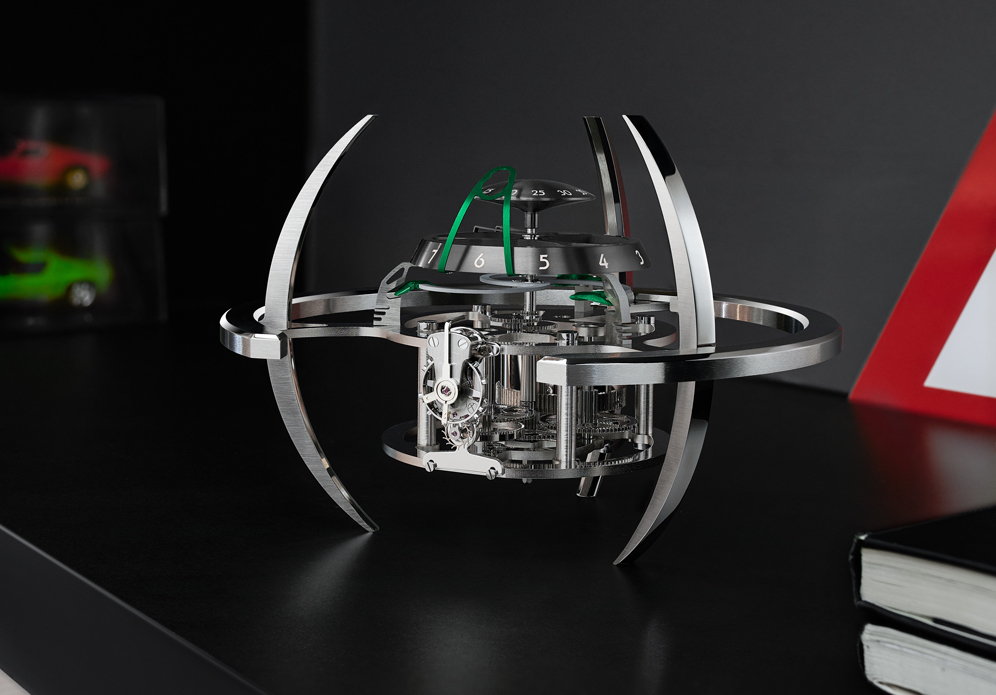The latest desk clock to emerge from the collaboration of designers and technicians at MB&F and L’Epée 1839 looks like a polished eyeball. But when opened, the timepiece, an inventive 6.7-inch round desk clock called the Orb, takes the shape of either a blooming flower or a shiny beetle spreading its wings.
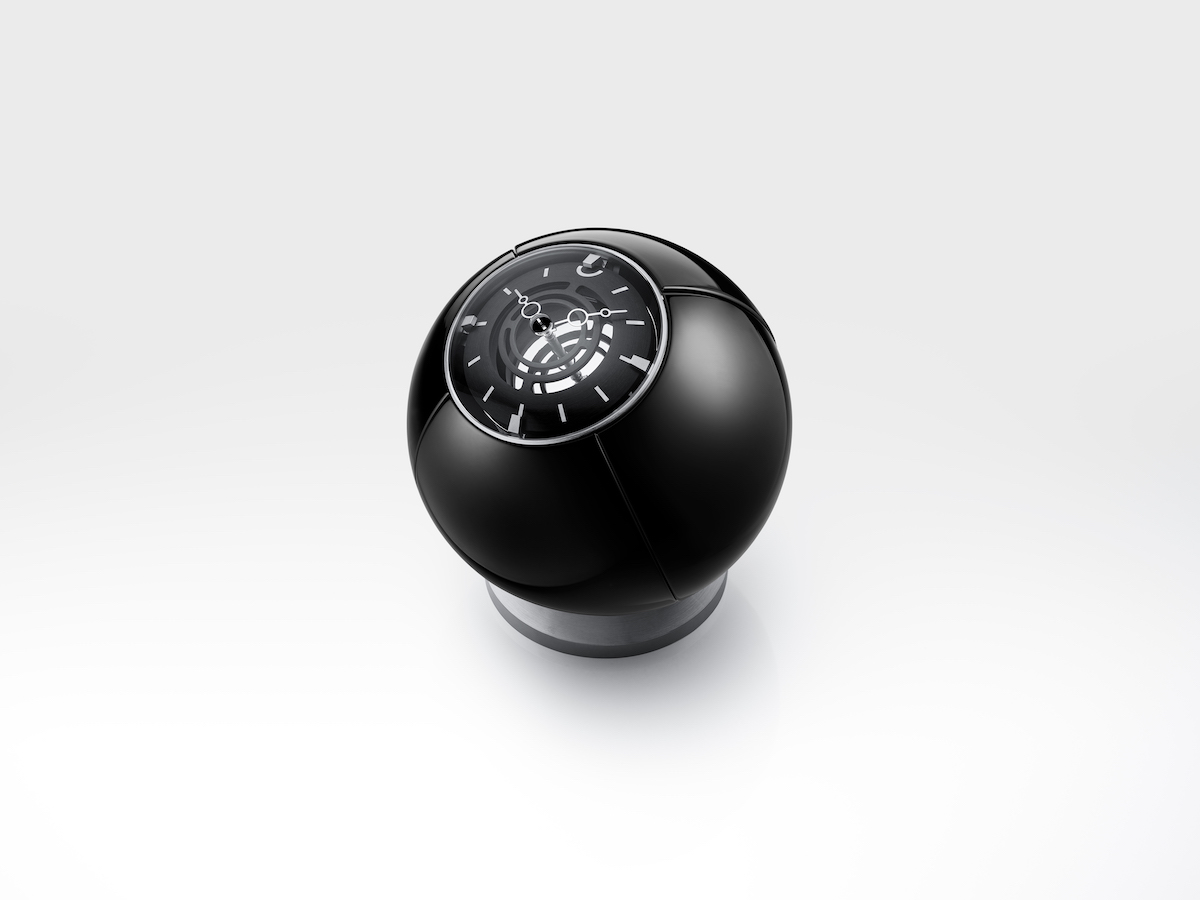
The wings, or elytra, which is the technical word for a beetle’s protective wing covers, can be closed or opened. However they are posed, the wings frame and support a new, exposed hour-striking clockwork based on a similar mechanism L’Epée 1839 also fits into its carriage clocks.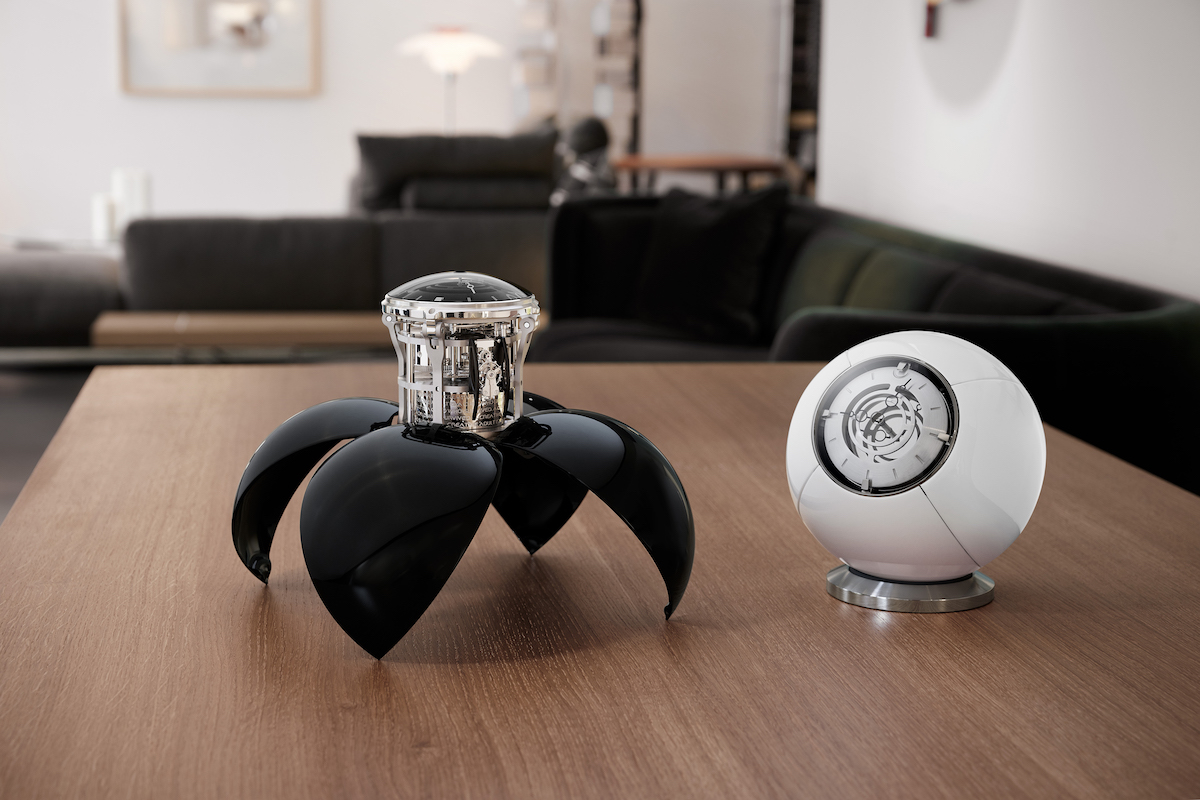
The eight-day clock, which will chime each hour, can morph as desired as it rests on the owner’s desk. Placed on its stand, or ‘saucer’ (so it doesn’t roll away), the Orb can be displayed closed or with any number of its four ‘wings’ opened.
Those wings don’t simply open up however. They can also swivel to display the Orb in one of several other positions. Opening all four wings means the Orb’s gears and dial can perch high atop the wings, as if rising from the center of a black or white flower.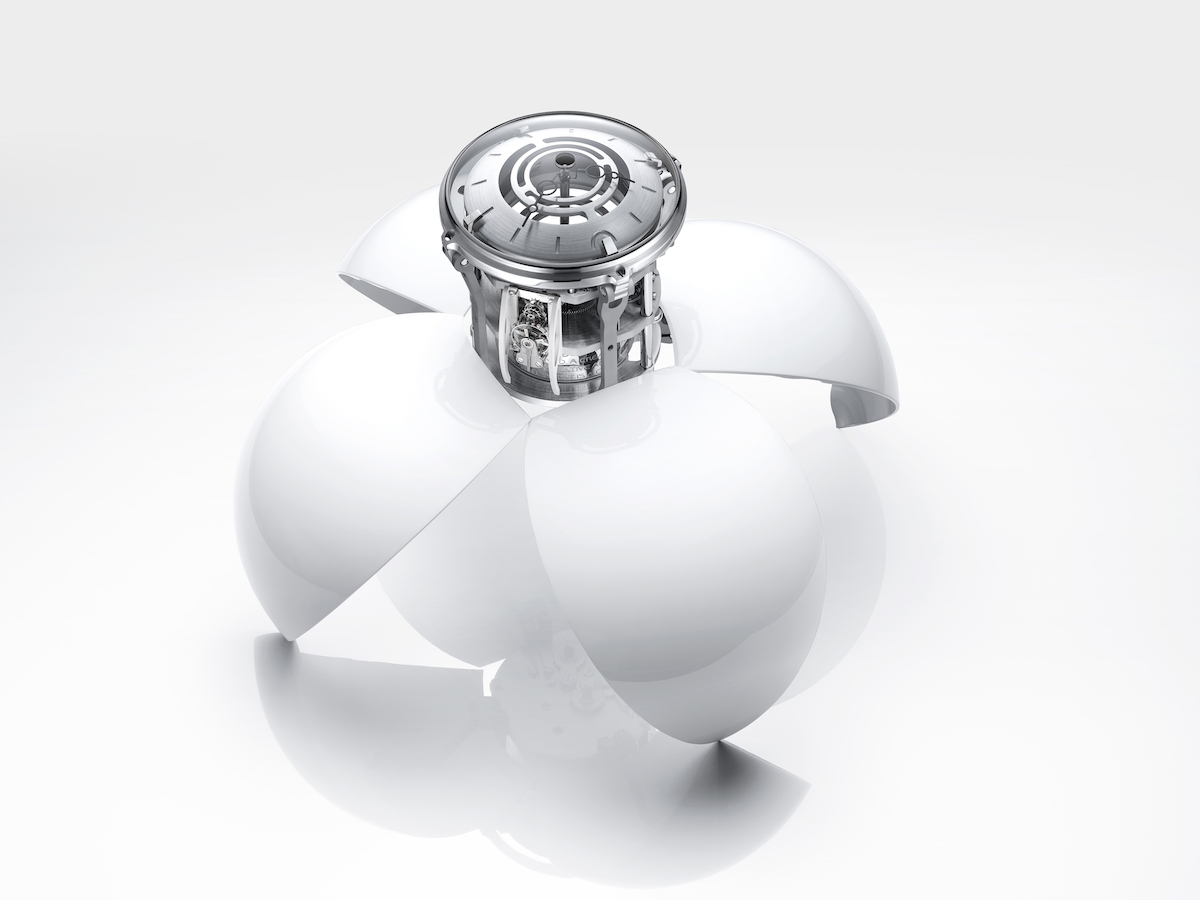
Aluminum sphere
MB&F explains that the Orb begins its manufacturing process as a solid block of aluminum that is then hollowed to create a sphere. “Once cut, the elytra are then coated with several layers of lacquer that are hardened in a kiln to create the brilliant finish,” according to MB&F. Artisans then solder hinges onto the wings and attach small magnets on the interior of each tip to keep the shape of a perfect sphere.

A beautiful L’Epée 1839 hour-striking clock movement can be seen below the Orb’s curved aluminum dial, which is covered by a domed mineral glass. The movement is powered with two barrels, one for the time and the other for the striking of the hours. The hour mechanism indicates the actual hour, mimicking a church clock. This function can also be repeated on demand via a button on the side of the clock, or turned on and off as desired.
The idea for the Orb comes from German designer Maximilian Maertens, who started his artistic career at MB&F as an intern before starting a design studio in Berlin. Maertens also worked with MB&F and L’Epée on the T-Rex clock.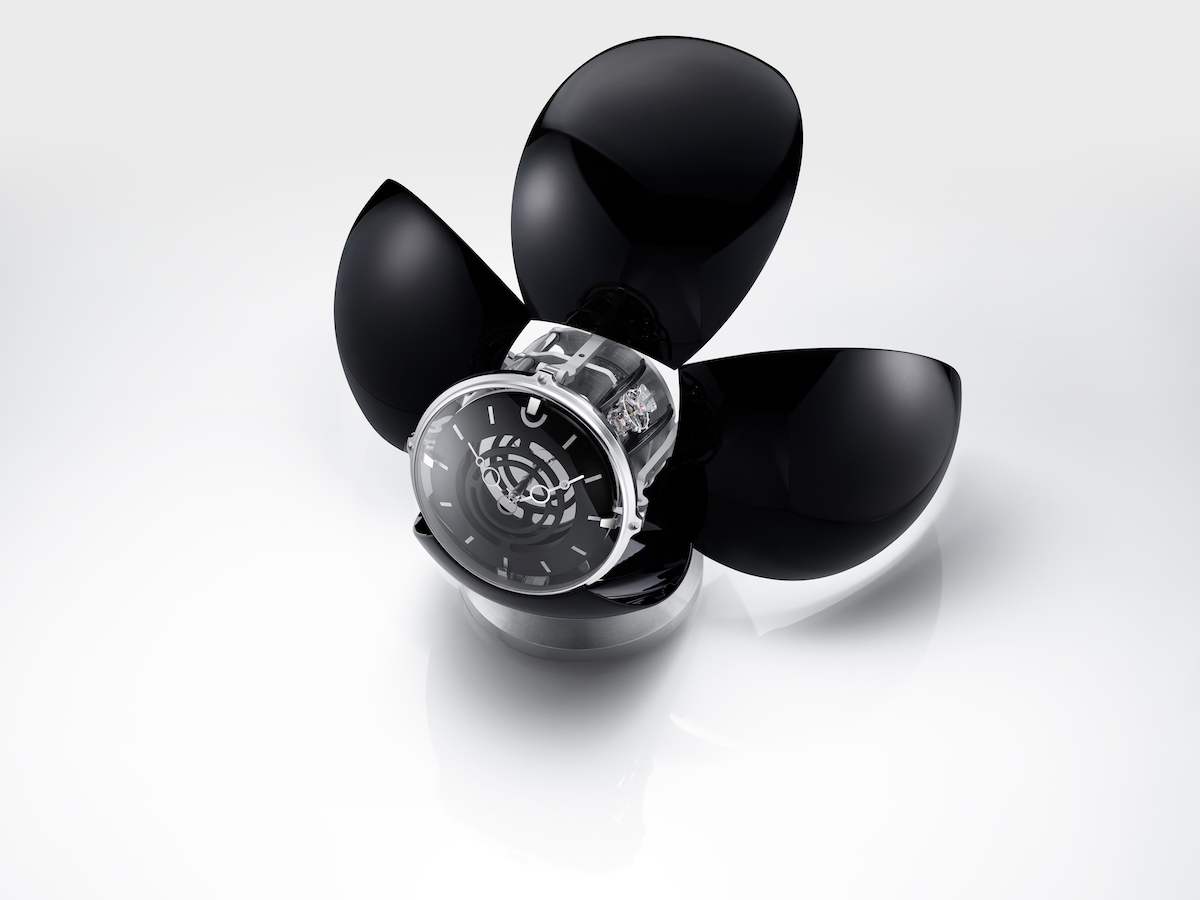
MB&F is making the Orb available in limited editions of fifty pieces each in white or black. Price: CHF 28,000.
Specifications: MB&F x L’Epee Orb
(A limited edition of 50 pieces each in white or black.)
Display: Hours and minutes, striking hour, repeated on demand via a button on the side of the clock, or turned on and off if required.
Body: Closed: Height: approx. 17cm by 17cm. Opened: 24cm by 30cm, weight is 1.9kg. Materials: Clockwork in palladium-plated brass and stainless steel. Elytra in aluminum and covered with handmade lacquer.
Movement: L’Epée 1839 in-house designed and manufactured movement, frequency is 18,000bph (2.5Hz), two barrels, power reserve eight days. Incabloc shock protection system, manual-winding: double-depth square socket key sets time and winds movement. Movement finishing: polishing, sandblasting, circular and vertical satin finishing and starburst decoration.























